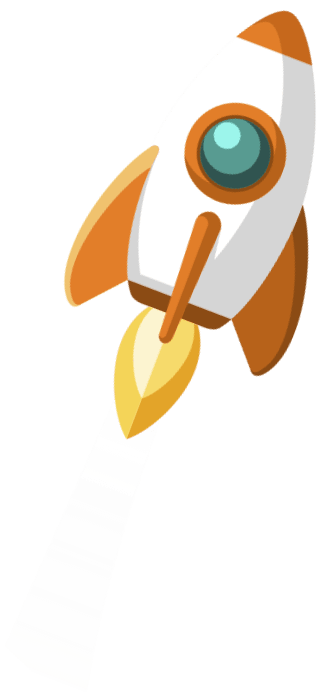On-Page SEO Ulm




Gutes SEO ist nachhaltig
SEO bietet eine sichtbare und effektive Suchpräsenz
Die Onpage-Optimierung ist ein wichtiger Teil der Suchmaschinenoptimierung und beinhaltet alle Maßnahmen, die Du direkt an Deiner Website vornehmen kannst, um die Sichtbarkeit, Rankings oder Conversions zu verbessern.
Dabei spielt vor allem der Content eine wichtige Rolle, doch auch technische Aspekte wie der Aufbau des Quellcodes oder die interne Verlinkung werden im Zuge der Onpage-Optimierung verbessert.
Ohne Analyse und Monitoring keine Optimierung
Suchmaschinenoptimierung ist grundlegend für den Erfolg
Es ist wichtig, dass Du bei der Onpage-Optimierung ein Zusammenspiel aus vielen Einzelfaktoren berücksichtigst. Um Deine vereinbarten Ziele strukturiert zu verbessern, benötigst Du genaue Analysen und ein regelmäßiges Monitoring.
Ohne Ziel und Ursachenforschung wird es schwierig, die Struktur oder den Content Deiner Website zu optimieren.
Planlos durchgeführte Maßnahmen können im Extremfall sogar zum gegenteiligen Effekt führen und dazu beitragen, dass Deine stabilen Keyword-Rankings einbrechen oder Deine Conversions rückläufig sind.
SEO ist die Lebensader des Online-Marketings
Erzähle uns von Deinem Vorhaben und wir sorgen gemeinsam dafür, dass Dein Projekt auch von Deiner Zielgruppe gesehen und gefunden wird.
Die Bestandteile der Onpage-Optimierung
Bei der Onpage-Optimierung gibt es keine feste Vorgehensweise. Es ist jedoch wichtig, dass Du die Maßnahmen und Analysen so umfassend wie möglich gestaltest, um alle Möglichkeiten zur Verbesserung Deiner Rankings (oder anderer KPI) zu nutzen.
Obwohl es keine festgelegten Bestandteile oder Strukturen für die Onpage-Verbesserung Deiner Websites gibt, soll diese Auflistung möglichst alle Elemente kurz skizzieren und in vier große Bereiche einteilen.
Die wichtigsten technischen Komponenten einer Website umfassen die Server-Geschwindigkeit, den Quellcode und die IP-Adresse.
Die Server-Antwortzeit beeinflusst die Bewertung durch Suchmaschinen und ist daher ein wichtiger Faktor für die Onpage-Optimierung.
Ein gut strukturierter Quellcode kann die Leistung der Seite verbessern, indem überflüssiger Code entfernt oder bestimmte Elemente komprimiert werden.
Die Verwendung einer eigenen IP-Adresse für ein Web-Projekt signalisiert Suchmaschinen, dass es sich um eine besondere Seite handelt und kann dazu beitragen, Bad Neighbourhoods zu vermeiden.
Der Begriff “Content” bezieht sich hier nicht nur auf sichtbare Elemente wie Texte oder Bilder, sondern auch auf für den Benutzer unsichtbare Elemente wie Alt-Tags oder Meta-Angaben.
Der Text ist ein wichtiger Teil von Content und sollte möglichst auf die zu optimierenden Begriffe und Keyword-Kombinationen ausgerichtet werden, um das Thema treffend und umfassend zu beschreiben. Die Strukturierung des Textes mithilfe von Absätzen, Bullet-Point-Listen, H-Überschriften-Tags, Fett- oder Kursivschreibung trägt ebenfalls zur Optimierung bei.
Auch Bilder und Videos sind wichtige Elemente von Content und können optimiert werden, um die Attraktivität der Seite für den Benutzer zu erhöhen und gute Rankings in der Bildersuche zu erzielen.
Meta-Angaben wie der Meta-Title und die Meta Description sind für den Benutzer zwar nicht sichtbar, spielen jedoch eine wichtige Rolle bei der Onpage-Optimierung und sollten in enger Zusammenarbeit mit Text und Bildern optimiert werden, um eine hohe Homogenität in Bezug auf Keywords und Thema zu erreichen.
Die interne Verlinkung hilft dabei, den Besuch von Bots zu steuern und gleichzeitig die Navigation für die Benutzer zu optimieren.
Um dies zu erreichen, ist es wichtig, dass die Menüs sorgfältig strukturiert sind und die Hierarchie der Website nicht mehr als vier Ebenen umfasst. Je weniger Ebenen es gibt, desto schneller können Bots alle Unterseiten erreichen und crawlen. Durch die interne Verlinkung kann man außerdem die Verteilung des Linkjuice steuern und die Relevanz einer Unterseite in Bezug auf ein bestimmtes Keyword erhöhen.
Eine gute Struktur der Seiteninformationen ist wichtig für die navigierenden Benutzer und die Crawler von Suchmaschinen. Um Duplicate Content zu vermeiden, sollten Canonical Tags überprüft oder Seiten mit dem Noindex-Attribut versehen werden.
Auch die URL-Struktur, die Verwendung von SEF-URLs und die URL-Länge können Teil der Onpage-Optimierung sein. Nicht besonders inhaltsreiche Seiten, die für den Google-Index wertlos sind, sollten mit dem Robots Meta Tag und dem Attribut “noindex” von den Suchergebnissen ausgeschlossen werden.
Das Design von Websites wird heute häufig auf die Usability ausgelegt, wodurch aufwendige Grafiken durch schlichte Grafiken ersetzt werden, um die Funktionalität der Seite zu erhöhen. Das Gleiche gilt auch für JavaScript-Anwendungen.
Um sicherzustellen, dass die Inhalte auch auf mobilen Endgeräten wie Smartphones oder Tablets problemlos abgerufen werden können, wird die Mobile Optimierung durchgeführt. Die Dateigrößen von Bildern und Grafiken sollten möglichst klein gehalten werden, um die Ladezeit der Website zu verkürzen.
Elemente auf der Seite sollten den Benutzer zum Handeln und zur Interaktion mit der Website anregen. Weitere Informationen zur Onpage- und Offpage-Optimierung sind im Überblick der Searchmetrics Ranking-Faktoren zu finden.
Die wichtigsten technischen Komponenten einer Website umfassen die Server-Geschwindigkeit, den Quellcode und die IP-Adresse.
Die Server-Antwortzeit beeinflusst die Bewertung durch Suchmaschinen und ist daher ein wichtiger Faktor für die Onpage-Optimierung.
Ein gut strukturierter Quellcode kann die Leistung der Seite verbessern, indem überflüssiger Code entfernt oder bestimmte Elemente komprimiert werden.
Die Verwendung einer eigenen IP-Adresse für ein Web-Projekt signalisiert Suchmaschinen, dass es sich um eine besondere Seite handelt und kann dazu beitragen, Bad Neighbourhoods zu vermeiden.
Der Begriff “Content” bezieht sich hier nicht nur auf sichtbare Elemente wie Texte oder Bilder, sondern auch auf für den Benutzer unsichtbare Elemente wie Alt-Tags oder Meta-Angaben.
Der Text ist ein wichtiger Teil von Content und sollte möglichst auf die zu optimierenden Begriffe und Keyword-Kombinationen ausgerichtet werden, um das Thema treffend und umfassend zu beschreiben. Die Strukturierung des Textes mithilfe von Absätzen, Bullet-Point-Listen, H-Überschriften-Tags, Fett- oder Kursivschreibung trägt ebenfalls zur Optimierung bei.
Auch Bilder und Videos sind wichtige Elemente von Content und können optimiert werden, um die Attraktivität der Seite für den Benutzer zu erhöhen und gute Rankings in der Bildersuche zu erzielen.
Meta-Angaben wie der Meta-Title und die Meta Description sind für den Benutzer zwar nicht sichtbar, spielen jedoch eine wichtige Rolle bei der Onpage-Optimierung und sollten in enger Zusammenarbeit mit Text und Bildern optimiert werden, um eine hohe Homogenität in Bezug auf Keywords und Thema zu erreichen.
Die interne Verlinkung hilft dabei, den Besuch von Bots zu steuern und gleichzeitig die Navigation für die Benutzer zu optimieren.
Um dies zu erreichen, ist es wichtig, dass die Menüs sorgfältig strukturiert sind und die Hierarchie der Website nicht mehr als vier Ebenen umfasst. Je weniger Ebenen es gibt, desto schneller können Bots alle Unterseiten erreichen und crawlen. Durch die interne Verlinkung kann man außerdem die Verteilung des Linkjuice steuern und die Relevanz einer Unterseite in Bezug auf ein bestimmtes Keyword erhöhen.
Eine gute Struktur der Seiteninformationen ist wichtig für die navigierenden Benutzer und die Crawler von Suchmaschinen. Um Duplicate Content zu vermeiden, sollten Canonical Tags überprüft oder Seiten mit dem Noindex-Attribut versehen werden.
Auch die URL-Struktur, die Verwendung von SEF-URLs und die URL-Länge können Teil der Onpage-Optimierung sein. Nicht besonders inhaltsreiche Seiten, die für den Google-Index wertlos sind, sollten mit dem Robots Meta Tag und dem Attribut “noindex” von den Suchergebnissen ausgeschlossen werden.
Das Design von Websites wird heute häufig auf die Usability ausgelegt, wodurch aufwendige Grafiken durch schlichte Grafiken ersetzt werden, um die Funktionalität der Seite zu erhöhen. Das Gleiche gilt auch für JavaScript-Anwendungen.
Um sicherzustellen, dass die Inhalte auch auf mobilen Endgeräten wie Smartphones oder Tablets problemlos abgerufen werden können, wird die Mobile Optimierung durchgeführt. Die Dateigrößen von Bildern und Grafiken sollten möglichst klein gehalten werden, um die Ladezeit der Website zu verkürzen.
Elemente auf der Seite sollten den Benutzer zum Handeln und zur Interaktion mit der Website anregen. Weitere Informationen zur Onpage- und Offpage-Optimierung sind im Überblick der Searchmetrics Ranking-Faktoren zu finden.
Die wichtigsten technischen Komponenten einer Website umfassen die Server-Geschwindigkeit, den Quellcode und die IP-Adresse.
Die Server-Antwortzeit beeinflusst die Bewertung durch Suchmaschinen und ist daher ein wichtiger Faktor für die Onpage-Optimierung.
Ein gut strukturierter Quellcode kann die Leistung der Seite verbessern, indem überflüssiger Code entfernt oder bestimmte Elemente komprimiert werden.
Die Verwendung einer eigenen IP-Adresse für ein Web-Projekt signalisiert Suchmaschinen, dass es sich um eine besondere Seite handelt und kann dazu beitragen, Bad Neighbourhoods zu vermeiden.
Der Begriff “Content” bezieht sich hier nicht nur auf sichtbare Elemente wie Texte oder Bilder, sondern auch auf für den Benutzer unsichtbare Elemente wie Alt-Tags oder Meta-Angaben.
Der Text ist ein wichtiger Teil von Content und sollte möglichst auf die zu optimierenden Begriffe und Keyword-Kombinationen ausgerichtet werden, um das Thema treffend und umfassend zu beschreiben. Die Strukturierung des Textes mithilfe von Absätzen, Bullet-Point-Listen, H-Überschriften-Tags, Fett- oder Kursivschreibung trägt ebenfalls zur Optimierung bei.
Auch Bilder und Videos sind wichtige Elemente von Content und können optimiert werden, um die Attraktivität der Seite für den Benutzer zu erhöhen und gute Rankings in der Bildersuche zu erzielen.
Meta-Angaben wie der Meta-Title und die Meta Description sind für den Benutzer zwar nicht sichtbar, spielen jedoch eine wichtige Rolle bei der Onpage-Optimierung und sollten in enger Zusammenarbeit mit Text und Bildern optimiert werden, um eine hohe Homogenität in Bezug auf Keywords und Thema zu erreichen.
Die interne Verlinkung hilft dabei, den Besuch von Bots zu steuern und gleichzeitig die Navigation für die Benutzer zu optimieren.
Um dies zu erreichen, ist es wichtig, dass die Menüs sorgfältig strukturiert sind und die Hierarchie der Website nicht mehr als vier Ebenen umfasst. Je weniger Ebenen es gibt, desto schneller können Bots alle Unterseiten erreichen und crawlen. Durch die interne Verlinkung kann man außerdem die Verteilung des Linkjuice steuern und die Relevanz einer Unterseite in Bezug auf ein bestimmtes Keyword erhöhen.
Eine gute Struktur der Seiteninformationen ist wichtig für die navigierenden Benutzer und die Crawler von Suchmaschinen. Um Duplicate Content zu vermeiden, sollten Canonical Tags überprüft oder Seiten mit dem Noindex-Attribut versehen werden.
Auch die URL-Struktur, die Verwendung von SEF-URLs und die URL-Länge können Teil der Onpage-Optimierung sein. Nicht besonders inhaltsreiche Seiten, die für den Google-Index wertlos sind, sollten mit dem Robots Meta Tag und dem Attribut “noindex” von den Suchergebnissen ausgeschlossen werden.
Das Design von Websites wird heute häufig auf die Usability ausgelegt, wodurch aufwendige Grafiken durch schlichte Grafiken ersetzt werden, um die Funktionalität der Seite zu erhöhen. Das Gleiche gilt auch für JavaScript-Anwendungen.
Um sicherzustellen, dass die Inhalte auch auf mobilen Endgeräten wie Smartphones oder Tablets problemlos abgerufen werden können, wird die Mobile Optimierung durchgeführt. Die Dateigrößen von Bildern und Grafiken sollten möglichst klein gehalten werden, um die Ladezeit der Website zu verkürzen.
Elemente auf der Seite sollten den Benutzer zum Handeln und zur Interaktion mit der Website anregen. Weitere Informationen zur Onpage- und Offpage-Optimierung sind im Überblick der Searchmetrics Ranking-Faktoren zu finden.
Wir bieten Dir ein qualitativ hochwertiges und erschwingliches Paket
Erzähle uns von Deinem Vorhaben und wir sorgen gemeinsam dafür, dass Dein Projekt auch von Deiner Zielgruppe gesehen und gefunden wird.




